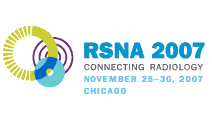
Abstract Archives of the RSNA, 2007
LL-BR2125-H06
Mammographic Breast Density by Area of Residence: Evidence of Lower Density in Rural Areas
Scientific Posters
Presented on November 27, 2007
Presented as part of LL-BR-H: Breast Imaging
Nicholas Mark Perry MD, Presenter: Nothing to Disclose
Prue Christie Allgood PhD, Abstract Co-Author: Nothing to Disclose
Sue Elizabeth Milner BSC, Abstract Co-Author: Nothing to Disclose
Kefah Mokbel MD, Abstract Co-Author: Nothing to Disclose
Stephen W Duffy, Abstract Co-Author: Nothing to Disclose
To investigate whether breast density varies by urban/rural area of residence as breast cancer incidence has been observed to do.
Using the standard four ACR Birads categories of mammographic density, 617 mammograms of women aged 29-87 receiving mammography at the Princess Grace Hospital, London, were assessed for density. Of these, 225 were from rural residents, 135 from suburban and 257 from urban. The association between having any dense tissue and area of residence was assessed using logistic regression, giving odds ratio estimates of relative risk adjusting for age.
Overall, 161 (26%) mammograms were classed as entirely fatty, 187 (30%) as having scattered fibroglandular densities, 136 (22%) as heterogeneously dense and 133 (22%) as extremely dense. Of the rural residents, 31% had entirely fatty mammograms, compared to 26% of the suburban residents and 22% of the urban residents. This difference was significant both unadjusted (p=0.035) and adjusted for age (p=0.044). Compared to the rural residents, the odds ratio estimates of relative risk of any dense tissue (scattered or more severe) after adjustment for age were 1.14 (95% CI 0.69-1.86) for suburban residents and 1.54 (95% CI 1.01-2.35) for urban. Age specific analyses suggested that the differences by area were more pronounced in women aged under 50.
There is evidence of higher breast density in women residing in urban and suburban areas in the UK compared to rural, consistent with higher breast cancer risk in the urban areas.
An urban population has higher mammographic density and risk of breast cancer, yet has lower uptake of screening. Increased attention to uptake and quality of screening in urban areas is indicated.
Perry, N,
Allgood, P,
Milner, S,
Mokbel, K,
Duffy, S,
Mammographic Breast Density by Area of Residence: Evidence of Lower Density in Rural Areas. Radiological Society of North America 2007 Scientific Assembly and Annual Meeting, November 25 - November 30, 2007 ,Chicago IL.
http://archive.rsna.org/2007/5011131.html

